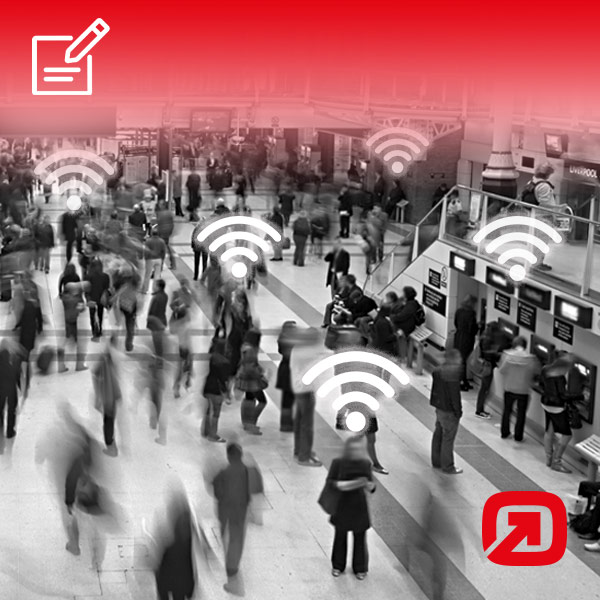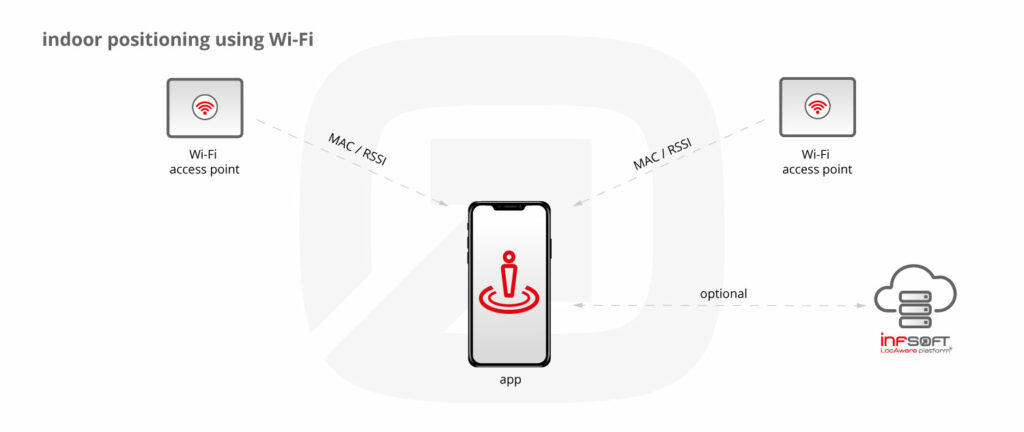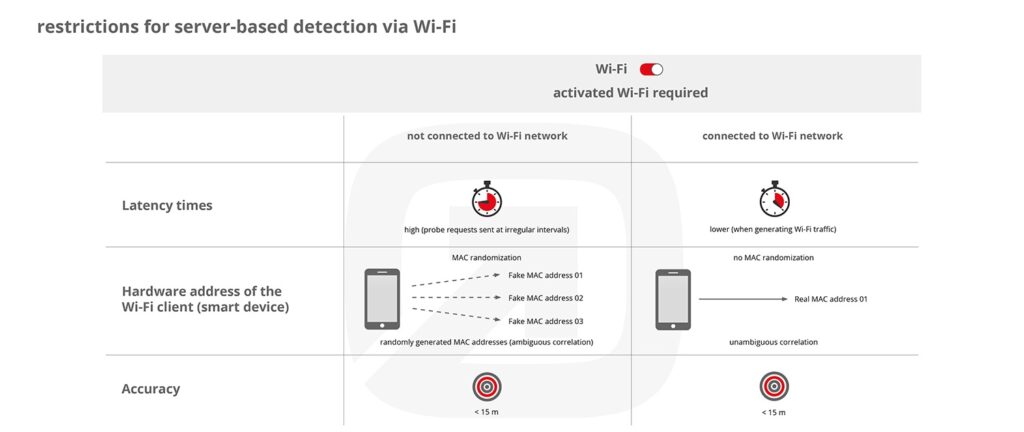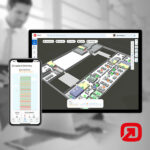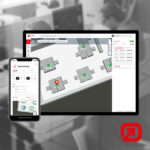Positioning using GPS does not work reliably inside buildings as there is no visual contact with the GPS satellites. A good alternative is indoor positioning using Wi-Fi. An additional advantage compared to GPS is the possibility to determine the current floor level.
SETTING UP AN INDOOR POSITIONING SYSTEM USING WI-FI
In most cases it is easy to install a Wi-Fi positioning system, since Wi-Fi access points already exist in many buildings. For example, existing customer hotspots, cash register systems and routers from shops can be used. The calibration of position determination works with a one-time reference measurement in the run-up, where the signal strength of the Wi-Fi networks is determined.
If a server-based solution is more suitable for the project, infsoft Locator Nodes can be installed throughout the building. In order to detect smartphones and other mobile devices, their Wi-Fi function has to be switched on, a connection to the network is not necessary, but has a positive influence on latency times and allows the unambiguous correlation of devices.
TECHNOLOGY
For positioning, the so-called fingerprinting method is used. The strength of the Wi-Fi signals (received signal strength indication, RSSI) and the MAC address (media access control) are significant.
For a client-based solution, the position is determined directly on a mobile device. A smartphone app calculates the current position based on the signal strength and MAC address. Optionally, the position data can be sent to a server for further processing.
When a server-based solution is applied, no app is required, all Wi-Fi capable devices are detected by the infsoft Locator Nodes and Wi-Fi tracking is possible.
ACCURACY OF WI-FI FOR INDOOR POSITIONING
Accuracy depends on multiple factors, for example the number of available networks, reflections for example in corridors and last but not least shielding through walls, ceilings and your own body. The accuracy of Wi-Fi used for indoor positioning varies from five to 15 meters – depending on the preconditions. Sensor fusion – the use of smartphone sensors – can further improve accuracy.
INDOOR NAVIGATION
Indoor navigation is a popular application of positioning using Wi-Fi. An indoor navigation solution makes sense wherever complex structures are to be found. Especially in airports, railway stations, shopping centres, hospitals, museums, offices and industrial complexes, an indoor navigation app can significantly improve the experience for visitors and employees.
In order to realize an indoor navigation, a client-based solution is required.
ANALYSIS OF POSITIONING DATA
The position data can also be used for analysis purposes. Either the data calculated on the smartphone can be sent to the backend, or a server-based solution can be used. The collected data provides important insights, for example into visitor behavior, and can uncover optimization potential for processes.
In addition to people who are carrying Wi-Fi enabled devices, assets such as medical devices in hospitals or laptops in office buildings can be tracked by attaching Wi-Fi tags. Thereby, they can always be found easily and are furthermore protected against theft.
PROS AND CONS OF INDOOR POSITIONING USING WI-FI
Pros
- existing Wi-Fi infrastructure can be used
- enabled Wi-Fi is sufficient
- large range (up to 150m)
- detects floor level
Cons
- relatively inaccurate (5-15m)
- no constant latency times
- use of randomized MAC address when smartphone is not connected to Wi-Fi network
- Wi-Fi client-based positioning is not possible with iOS devices
More information on this topic can be found here.

